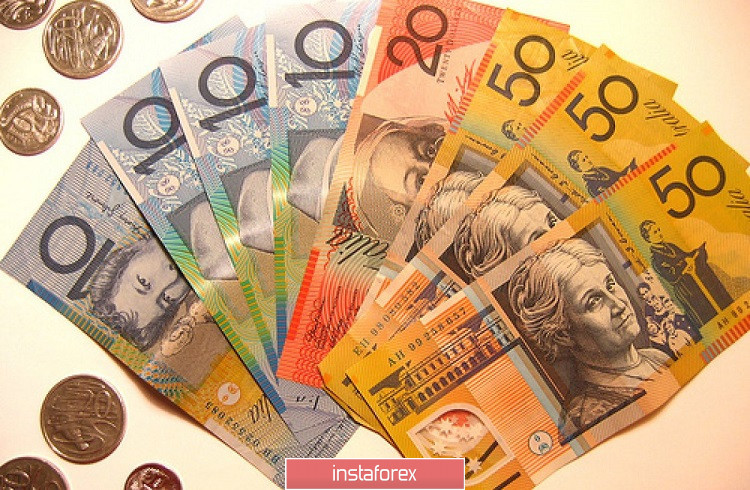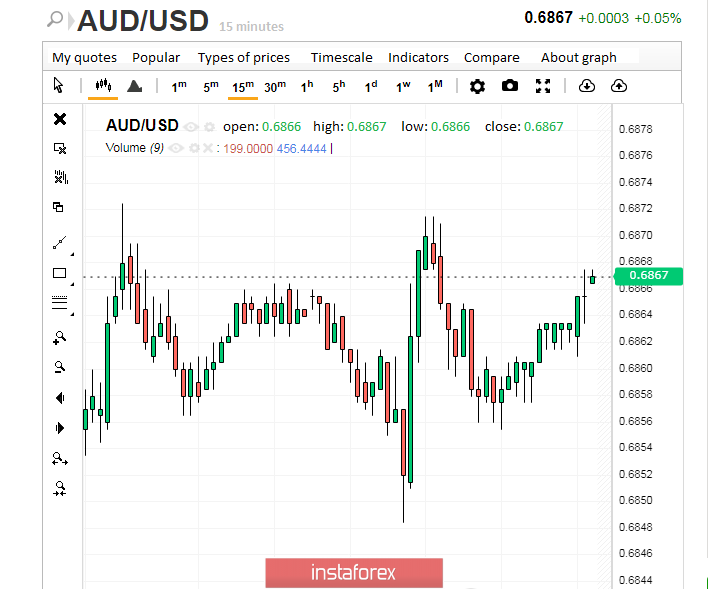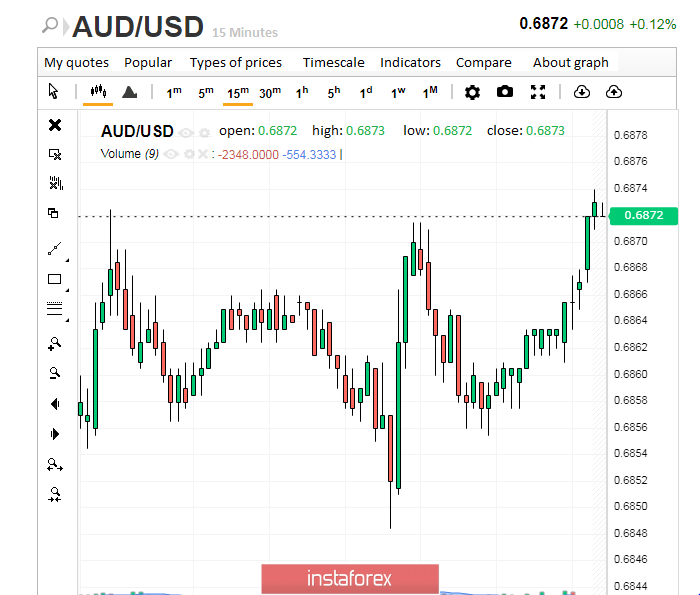
The Australian currency approached the middle of the week in a somewhat "disassembled" state. Like a fledgling chick, the aussie tried to rise at the beginning of the week, but it slightly got "blown away" in the middle, nearly abandoning its attempts. The current dynamics of the Australian dollar is not very positive, but there is no obvious negative either.
On Tuesday, October 29, significant support for the aussie was provided by the positive mood of investors after the news of little progress in trade negotiations between the US and China. Recall that China and America are the main trade and economic partners of Australia, while China remains the largest buyer of its agricultural products and raw materials. According to analysts, the positive changes in US-Chinese trade relations are supporting the Australian economy and its currency.
Yesterday, the AUD/USD pair tried to take revenge and win back the previous falls. The pair tried to gain a foothold above 0.6850, but did not stay in this position for long. Soon, the pair began to decline. The reason was the speech of Philip Lowe, head of the Reserve Bank of Australia (RBA). He announced the readiness of the regulator to further reduce interest rates. Lowe noted that the RBA has no right to ignore the actions of central banks of other countries, as this will lead to the strengthening of the Australian dollar. Recall that earlier, the Australian regulator lowered interest rates to record low levels, which caused concern for market participants. They fear that after a cut in the key rate in June, July and October of this year, the RBA will have to lower the cost of borrowing further.
In the coming months, however, the market expects the Australian regulator to cut rates. One of the catalysts for such a decision may be not so consoling economic data. Inflation data for the third quarter of 2019 is expected to be released in Australia on Wednesday, October 30. Experts expect inflation to increase by about 1.7%, although this figure is below the target level of 2-3%.
It should be noted that the consumer price index in the country has not reached the target range of 2-3% for a long time. This pushes the regulator to introduce monetary stimulus measures. This is a quantitative easing (QE) program. Analysts believe that the RBA may raise this issue at the next meeting, which will be held next week. If this scenario is realized, the pressure on the AUD/USD pair will increase; its decline to the levels of 0.6600–0.6700 is not ruled out.
The pair was trading at a fairly stable level of 0.6866–0.6867 on Wednesday morning, October 30. Analysts record the long-term downward dynamics of the aussie.

This month, the Australian currency was was supported by the expectation of a trade agreement between the United States and China. In the case of a positive solution to this issue, profit taking will begin in long positions on the Australian dollar and in the AUD/USD pair. A similar situation will return the pair to a global downward trend, experts said.
Analysts consider 0.6890 as the closest strong resistance level in the AUD/USD pair. The pair approached this bar twice - in September and October 2019, but could not overcome the threshold. At the moment, the AUD/USD pair is trading at 0.6872-0.6873, having slightly climbed after the morning decline.

In the event of a breakdown of the short-term support level of 0.6830, analysts expect the pair to return to the bearish trend. Such a price reversal will be a signal for the resumption of sales of AUD/USD, experts conclude.





















